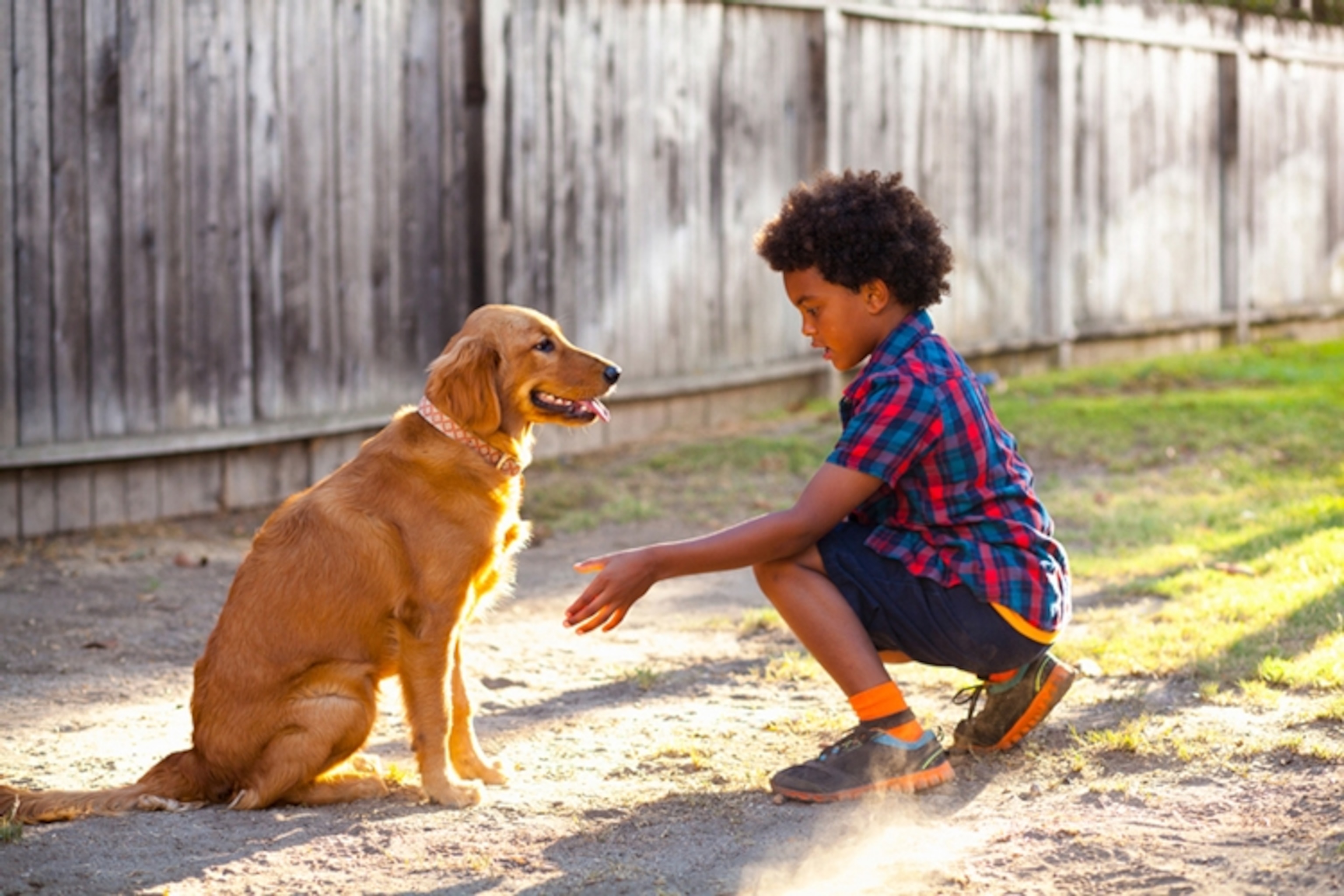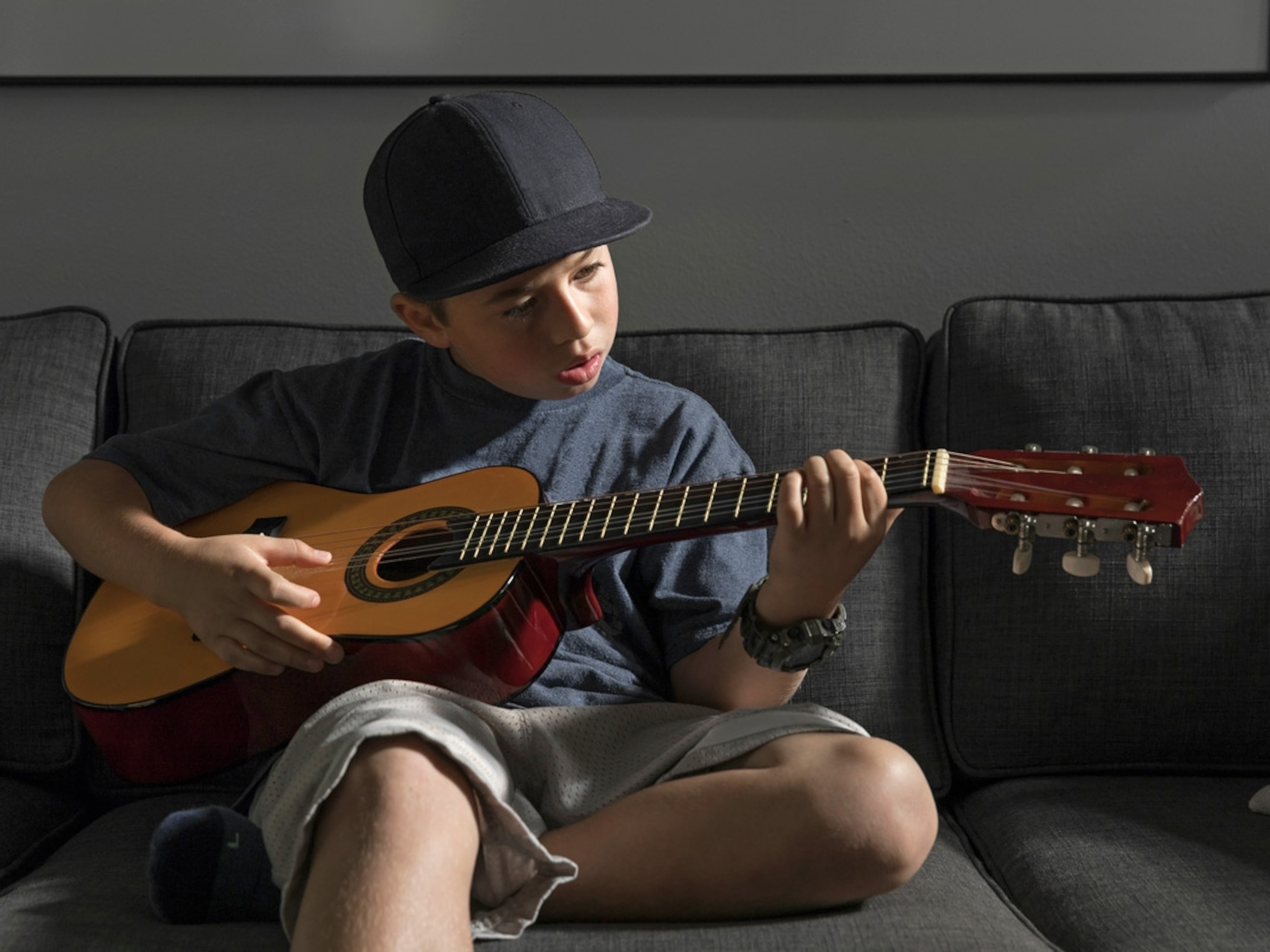
Here’s how kids can volunteer, even from home
Simple—and fun—activities can foster a lifelong commitment to helping others.
For generations, kids who wanted to fundraise for a worthy cause could gather supplies from the kitchen, mix a pitcher of lemonade, and set up a stand on their street corner.
But when life gives you coronavirus, you have to make do with a different approach to helping others. One that, for the most part, involves staying inside your house.
All forms of volunteering have changed radically over the past few months, says Greg Baldwin, CEO of VolunteerMatch, the largest web platform connecting people to service opportunities with nonprofits. “Stay-at-home orders had a devastating impact on volunteer programs. So many are postponed,” he says.
Although the need for help has never been greater, no one wants to compromise anyone’s health and safety, so finding opportunities—especially for kids—may require more patience and persistence than in the past. “Organizers have begun to reboot, trying to find a way forward,” says Baldwin, noting that new opportunities are being added to his site every day. (Be sure to click on the “kids” filter to get a more targeted list.)
It still can be tricky territory to navigate, especially for families with young children who are already limited in what kinds of activities are feasible. Don’t let that deter you, urges Baldwin, who fondly remembers his earliest volunteer endeavors, including the time he helped his dad’s Rotary Club set up an Easterseals summer camp. “My task was to paint the silver rocket on the Putt-Putt golf course,” Baldwin says. These experiences taught him how rewarding volunteering can be and broadened his worldview.
Volunteering may be even more beneficial for children right now, says Amanda Zelechoski, associate professor of psychology at Valparaiso University and director of the Psychology, Law, and Trauma Lab, which is conducting the Coronavirus Family Impact Project. “Something happened out of our control. It’s pretty traumatic,” she says. “What are ways we can bring control back into our lives? How can we feel empowered?” One answer: Work on a service project together as a family.
Getting them started
The key is encouraging kids to “feel like they can do something,” says Maryam Abdullah, a developmental psychologist and the parenting program director of the Greater Good Science Center at the University of California, Berkeley. “They feel competent. They’re contributing. And that feels good,” she says.
Children of all ages can volunteer—Abdullah notes that even babies exhibit signs of wanting to help others. In lab studies, kids who are just over a year old have picked up objects they thought a researcher needed.
To foster these tendencies, model volunteering behavior to show children that it’s something you value. For example, when Zelechoski’s husband delivers meals to people in need in their community, their three boys always ride along in the car. “They’ve never known anything different,” she says, adding that the trips also serve as a reminder to focus on what they’re grateful for.
Parents might worry about introducing topics like hunger, illness, or homelessness to children. But explaining these ideas in the context of how they can help may make the conversations easier. “Kids want to make sense of the world around them,” Zelechoski says. Just be prepared to answer the questions that will inevitably arise.
Then let them take part in the planning and decision-making about what kind of volunteer service you want to do. What if they have impractical suggestions? “Celebrate the idea, and then guide to the heart of it. What is their purpose? Help them troubleshoot,” Abdullah says.
Here are a few categories to consider:
First steps
In this time of unprecedented stress, Zelechoski wants to remind parents that not every form of service has to be “capital V volunteering.” Drawing cheerful images with chalk in your driveway or posting signs in your windows can lift others up. You can take those ideas a step further by turning your free sidewalk library (decorating a shoebox or another container works too) into a sidewalk chalk-holder that anyone can use to draw their own uplifting messages. Or give your kids a daily challenge by asking them to come up with a different happy animal to illustrate for display.
Keep the feel-good vibes going by asking your kids to pack up toys and clothes to donate, or to decide on a charity that could really use the contents of their piggy banks. Abdullah suggests checking out the website for Youth Service America, which offers downloadable activity guides for a variety of easy at-home projects, like assembling snack sacks for your local food pantry.
Figure out what kinds of causes your kids are passionate about, and then contact local organizations working on those issues. They’ll likely have some ideas of how your kids can help, possibly by raising awareness among their friends or drumming up donations.
Crafty kids
Anyone who can sew—kids included!—can set up a fabric mask-masking factory at home. Face coverings are in high demand everywhere, especially in health-care settings. And even if you don’t know of a specific location to donate, you can sell them and turn the proceeds over to charity. (Maybe this is the lemonade stand of 2020?)
If you and your kids aren’t comfortable around needles, don’t freak out. There are loads of no-sew options to experiment with. National craft supply store Michaels even shares ideas, like this one, which involves slicing up an old T-shirt. Or invent your own design using pipe cleaners or whatever else you can find in your junk drawer. Funky handmade masks might be the push your kids need to actually wear them when you leave the house. Just make sure the masks are made following basic safety standards.
When you’re ready for another project, put those same skills to work for Project Linus, a 25-year-old organization that has sent more than eight million homemade security blankets to kids who are sick or have experienced trauma. “Blankets make them feel like someone cares,” says National President Patty Gregory. And that someone can be any age. “We have volunteers as young as four,” she adds. “Anybody can do this.”
The Project Linus website offers more complex patterns for quilts and afghans as well as step-by-step instructions for two “no sew fleece blankets” that require little more than fabric and scissors. “If you can tie your shoes, you can make a fleece blanket,” Gregory says.
Local chapters often get flooded with these simpler kinds of blankets, so it’s best to check if yours is accepting them at the moment. And be aware that many drop-off sites have been affected by general coronavirus restrictions and closures. Gregory’s advice is to keep making blankets, even if you need to hold on to them for a little bit, or contact local shelters near you to see if they’re accepting blankets or other supplies.
Pen pals
Everybody likes getting a handwritten note, especially when it includes colorful doodles. Instead of adding to the refrigerator art gallery, get your kids to stuff their masterpieces into envelopes destined for isolated seniors. Lots of nursing homes and hospices are welcoming such letters, as is the organization Love for the Elderly, which sorts and distributes its haul where needed. (Another option: Shoot a video to share a message of support through the website Care Not Covid.)
Of course plenty of people deserve thank-yous: teachers, doctors, nurses, postal workers. Ask your kids to think about why they’re grateful for these folks, and write up a ton of letters. Then ask one or two who you interact with to pass them along to their co-workers.
That’s basically the model that’s used by A Million Thanks, which has sent more than 10 million letters to U.S. military deployed around the world. The group bundles a box of about 1,000 letters and sends them to a specific service member, who then distributes through his or her unit. (Because of COVID-19, no letters are being sent at the moment, but founder Shauna Fleming hopes to be collecting again by late summer or early fall.)
A letter might be small, but it can have a significant impact. “I had one soldier say he’d rather get letters than food on a daily basis,” Fleming says.
Furry friends
Make volunteering part of your daily life by welcoming a furry new member of the family, even if it’s only temporary.
Animal rescues have recently seen a spike in interest in fostering dogs and cats—in fact the ASPCA reports a nearly 70 percent increase in animals going into foster care through its New York City and Los Angeles programs, compared to the same period in 2019.
ASPCA President and CEO Matt Bershadker notes that when you foster a pet at home, you’re freeing up space at shelters for other animals, plus easing the burden on the human staff members who must now operate in compliance with social distance requirements. Every shelter handles its foster program differently, but Bershadker says most volunteers care for an animal at home from two weeks to a few months.
Kids who learn to take dogs on walks, clean out kitty litter boxes, and just spend time with animals are developing lifelong skills, says Lauren Lipsey, vice president of community programs at the Humane Rescue Alliance in Washington, D.C. If fostering can’t work—for logistical or health reasons—families can help out in other ways. Lipsey recommends kids round up supplies, including corks (cats love ’em as toys) and food, to donate.



